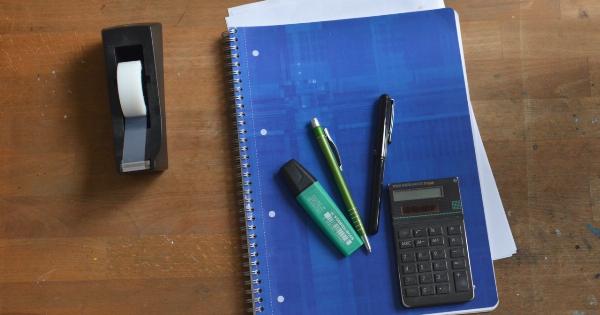If you’ve ever experienced intense muscle contractions that cause pain and discomfort, you know how debilitating cramps can be. Whether it’s a menstrual cramp or a muscle cramp while exercising, finding relief can seem like an uphill battle.
Fear not – we’ve put together the ultimate guide to help you beat cramps and get back to feeling your best.
Understanding Cramps
Cramps can occur for various reasons, and it’s essential to understand what causes them before seeking ways to alleviate the pain. Here are some common types of cramps and their causes:.
1. Menstrual Cramps
Many women experience menstrual cramps, also known as dysmenorrhea, during their monthly cycle. The uterus contracts to help shed its lining, causing pain and discomfort. Hormonal factors, such as prostaglandins, play a significant role in these cramps.
2. Exercise-Associated Muscle Cramps (EAMC)
EAMC occurs during or after physical activity and can affect various muscle groups. Dehydration, electrolyte imbalances, and muscle fatigue are among the leading causes of exercise-related cramps.
3. Nighttime Leg Cramps
Nighttime leg cramps are sudden, involuntary contractions of the muscles in the legs and feet. The exact cause of these cramps is not always clear but could be related to nerve compression, dehydration, or certain medications.
4. Abdominal Cramps
Abdominal cramps can have various causes, including gas, constipation, diarrhea, and digestive issues. In some cases, underlying medical conditions like irritable bowel syndrome (IBS) may be responsible for recurring abdominal cramps.
Effective Approaches to Treating Cramps
Now that we have a grasp on the different types of cramps let’s delve into the most effective ways to alleviate and prevent them:.
1. Stay Hydrated
Dehydration is often a leading cause of muscle cramps, especially during exercise. Ensure you drink enough fluids throughout the day, especially water, to maintain proper hydration levels.
If you exercise regularly, consider consuming electrolyte-rich drinks to replenish essential minerals lost through sweat.
2. Stretch and Massage
Gentle stretching and massaging of cramped muscles can provide immediate relief. Stretching helps relax the muscle fibers and relieve tension. Massaging the affected area increases blood flow and reduces muscle tightness.
Try incorporating yoga or regular stretching exercises into your routine to prevent cramps from occurring.
3. Apply Heat or Cold
Applying heat or cold to the affected area can help relax muscles and reduce cramp severity.
Warm compresses or heating pads are beneficial for menstrual cramps, while cold packs or ice wrapped in a cloth can be more beneficial for exercise-related cramps or localized injuries.
4. Over-the-Counter Pain Relievers
If the pain becomes unbearable, over-the-counter pain relievers like ibuprofen or acetaminophen can provide temporary relief. However, it’s crucial to consult a healthcare professional before taking any medication regularly.
5. Stay Active
Regular physical activity helps improve overall muscle function and reduces the likelihood of cramps. Engage in activities like biking, swimming, or walking to improve muscle strength and endurance.
However, remember to warm up adequately before any exercise and gradually increase the intensity to avoid muscle strain and cramps.
6. Maintain a Balanced Diet
Eating a well-balanced diet can help prevent nutritional deficiencies that may contribute to muscle cramps. Ensure you consume foods rich in magnesium, calcium, and potassium, as deficiencies in these minerals have been linked to increased cramp risk.
Incorporate leafy greens, nuts, seeds, dairy products, and bananas into your diet.
7. Manage Stress
Stress and tension can exacerbate muscle cramps. Find healthy coping mechanisms to manage stress, such as meditation, deep breathing exercises, or engaging in hobbies you enjoy.
Taking care of your mental well-being can also have a positive impact on your physical health.
8. Use Herbal Remedies
Certain herbs and supplements have been used traditionally to alleviate cramps. For example, ginger and cinnamon have anti-inflammatory properties that may help reduce menstrual cramp discomfort.
Additionally, magnesium supplements have been shown to relieve muscle cramps and spasms.
9. Warm Baths with Epsom Salt
Soaking in a warm bath with Epsom salt can help relax muscles and relieve cramps. The magnesium sulfate in Epsom salt is absorbed through the skin and can aid in reducing inflammation and promoting muscle relaxation.
10. Consult a Healthcare Professional
If your cramps are severe, persistent, or significantly impact your quality of life, it is essential to consult a healthcare professional.
They can help determine the underlying cause of your cramps and recommend appropriate treatments or lifestyle modifications.
Conclusion
Cramps can be a stubborn and painful issue, but there are numerous strategies and remedies to help manage and alleviate them. Remember to stay hydrated, maintain a balanced diet, and engage in regular exercise.
Incorporate self-care practices such as stretching, heat or cold therapy, and stress management to find relief. If all else fails, consult a healthcare professional for a personalized treatment plan. With the tips provided in this ultimate guide, you’ll be well-equipped to beat cramps and regain control of your life.































